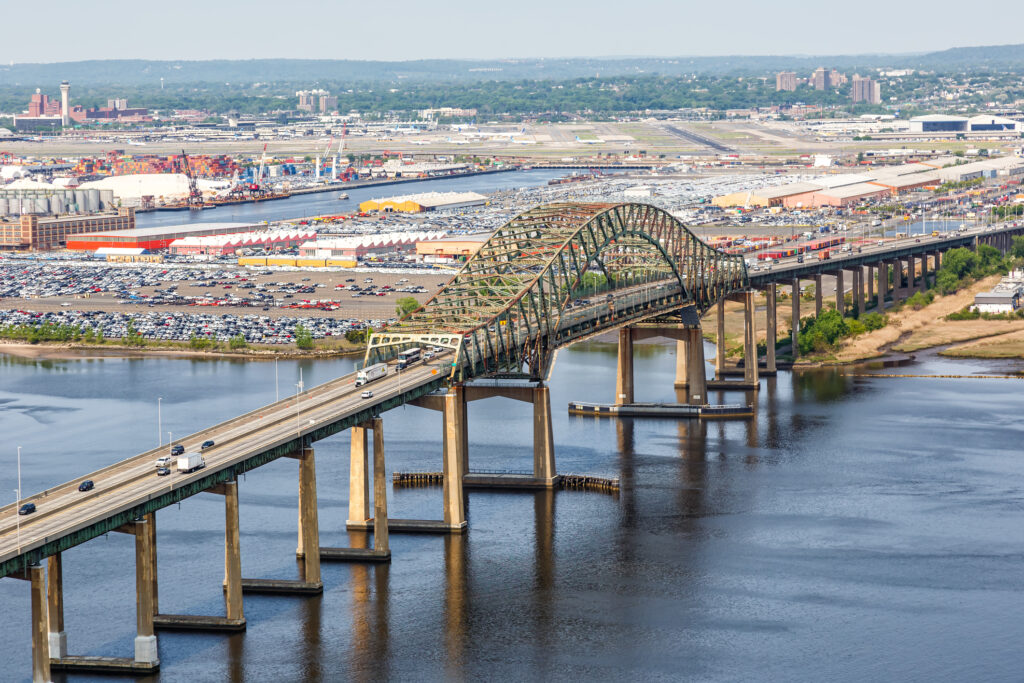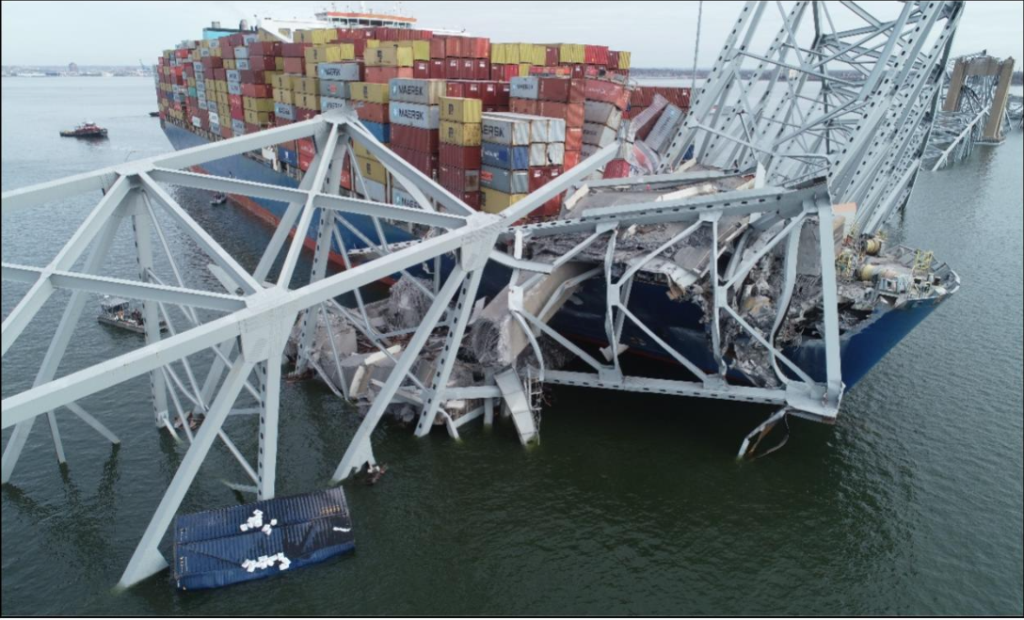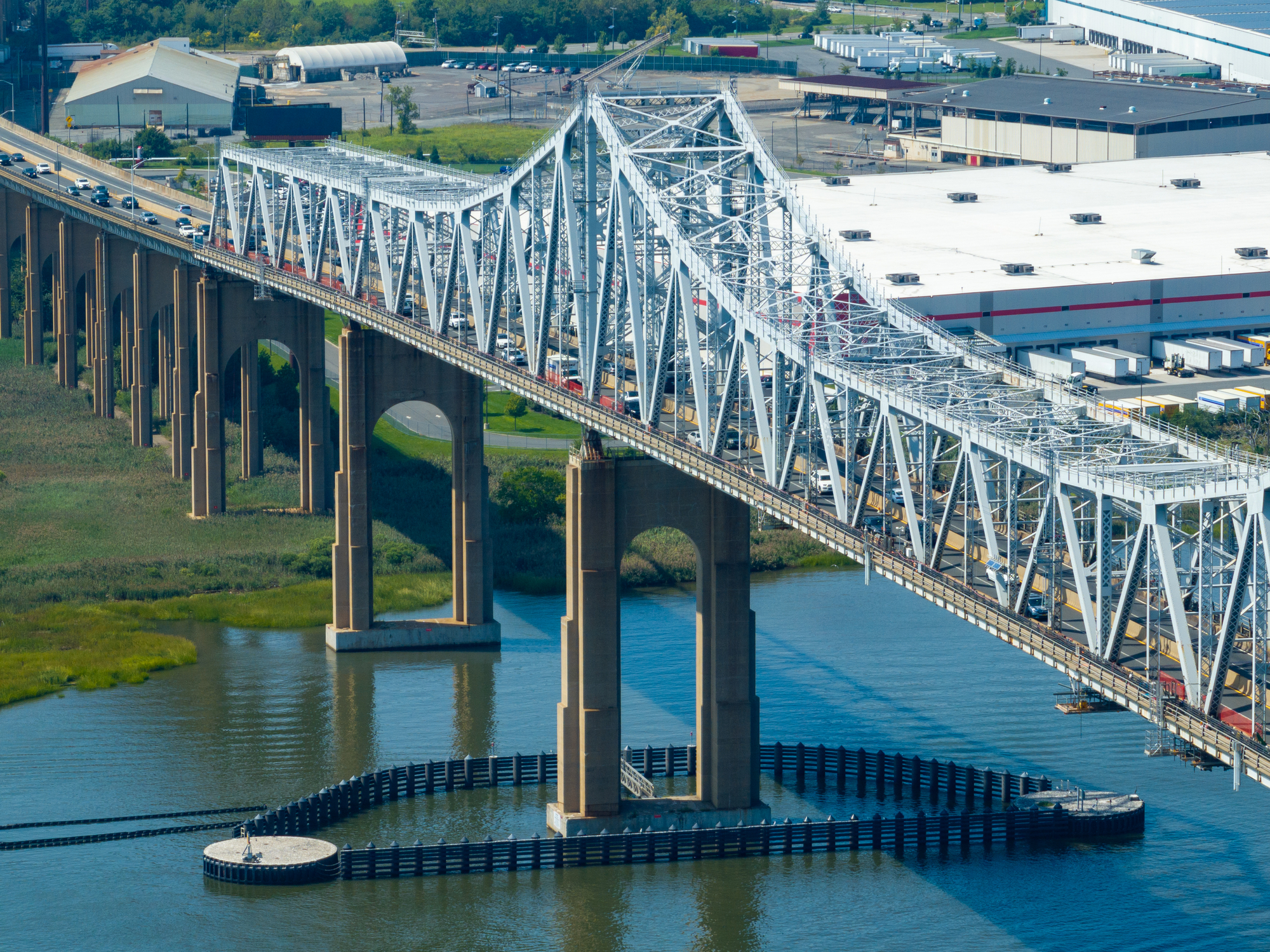WASHINGTON — The National Transportation Safety Board on Thursday urged owners of 68 aging bridges in 19 states to conduct immediate risk assessments following the collapse of Baltimore’s Francis Scott Key Bridge, which was struck by a cargo ship last year.
The NTSB said the Key Bridge had a collapse risk nearly 30 times higher than the acceptable threshold set by the American Association of State Highway and Transportation Officials (AASHTO), revealing significant safety gaps in older bridges designed before current guidance was adopted.
Key Points
- NTSB recommends risk assessments for 68 older bridges lacking modern collapse evaluations.
- Three New Jersey bridges identified: Commodore Barry, Vincent R. Casciano, and Outerbridge Crossing.
- AASHTO’s Method II used to calculate ship collision risk and determine need for safety upgrades.
As part of its ongoing investigation into the March 26, 2024, collapse, the agency identified 68 similar bridges that lack modern vulnerability assessments. It recommended that 30 owners of these structures use AASHTO’s Method II calculation to determine the annual frequency of potential collapse.

“These bridges need to be evaluated to see whether their collapse risk exceeds the acceptable level,” the NTSB stated. “If so, a risk reduction plan should be implemented.”
Among those flagged were three major spans in New Jersey: the Commodore Barry Bridge (built in 1974), the Vincent R. Casciano (Newark Bay) Bridge (1955), and the Outerbridge Crossing (1928). Each was classified as either “typical” or “critical/essential,” depending on their design and function.
The NTSB emphasized that its recommendations do not indicate any of the 68 bridges are in imminent danger but stressed the need for updated assessments using current standards. The AASHTO guidelines now serve as the national benchmark for determining whether a bridge faces an unacceptable risk of collapse due to ship strikes.

The findings follow a year of analysis after the container ship Dali slammed into the Key Bridge, triggering its collapse and prompting federal authorities to reassess the nation’s aging infrastructure.
